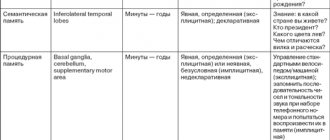How does meningococcemia develop?
From the lesion with macrophages in which viable bacteria are preserved, or through the lymphatic tract, meningococci enter the blood. Meningococcal sepsis or meningococcemia develops. The spread of infection is facilitated by many factors: the virulence of pathogens, the massiveness of the infectious dose, the state of the body’s immune system, etc. During the period of meningococcemia, foci of secondary lesions and immunological reactions are formed. The disease progresses rapidly, unpredictably and is always very difficult.
The massive death of meningococci and the release of endotoxin is accompanied by toxic reactions. The acid-base state, hemocoagulation, water-electrolyte balance, the function of external and tissue respiration, and the activity of the sympathetic-adrenal system are disrupted.
Endotoxin of pathogens affects blood vessels, stasis and multiple hemorrhages are formed in the skin, mucous membranes and internal organs. Intravascular coagulation syndrome (DIC) develops. Hemorrhage into the adrenal glands leads to the development of Waterhouse-Friderichsen syndrome and infectious-toxic shock. Internal organs are affected, dysfunction of which leads to the death of the patient.
Rice. 2. The photo shows meningococcemia in children. Extensive hemorrhages are visible on the skin. The photo on the left shows skin necrosis.
Clinical forms and classification of meningococcal infection
Meningococcal infection is characterized by large polymorphism, which is associated with the pathogenesis of the disease.
- Clinical forms of the disease are divided into localized and generalized. Localized forms include meningitis and nasopharyngitis, generalized forms include meningococcemia with rashes (typical form) and without rashes (atypical form).
- Localized and generalized forms can occur without metastasis to internal organs and with metastasis (meningitis, meningoencephalitis - the most common forms and pericarditis, myocarditis, arthritis, pneumonia, iridocyclitis and other rare forms).
- According to the severity of the course, meningococcal infection is divided into mild, moderate, severe and very severe. The degree of toxicosis, adrenal insufficiency, the rate of progression and severity of signs of damage to the central nervous system, the development of disseminated intravascular coagulation syndrome and infectious-toxic shock are the main criteria for the severity of meningococcal infection.
- If the duration of the disease is up to 3 months, they speak of an acute course, more than 3 months - a protracted course, and more than 6 months - a chronic course. The chronic form of menigococcemia and meningitis can have a relapsing course.
Rice. 2. The photo shows meningococcal infection in children. One of the main symptoms of the disease is a rash. Minor hemorrhages in the skin with meningococcal infection (left) and extensive bruises in a child with severe meningococcal sepsis (right).
Signs and symptoms of meningococcemia
The incubation period for meningococcemia ranges from 5 to 6 days. Fluctuations range from 1 to 10 days. The onset of the disease is most often acute and sudden. The generalization of the process is indicated by the deteriorating general condition of the patient, a significant increase in body temperature, increasing headache, increasing pallor of the skin, tachycardia and shortness of breath. Muscle and joint pains, rashes on the skin and hemorrhages on the mucous membranes appear.
A rash with meningococcemia appears in the first hours of the disease. Hemorrhagic elements can be enormous in size and accompanied by skin necrosis. Along with the hemorrhagic rash, hemorrhages are observed in the conjunctiva of the eyes and sclera, mucous membranes of the nose and pharynx, and internal organs. Sometimes gastric, nasal and uterine micro- and macrobleedings and subarachnoid hemorrhages occur.
An extremely severe form of meningococcemia is complicated by damage to the heart and its membranes, thrombosis of large vessels, infectious-toxic shock, hemorrhage in the adrenal glands (Waterhouse-Friderichsen syndrome). Violations of the functions of vital organs lead to the death of the patient.
In some cases, there is a milder course of the disease and atypical meningococcemia, which occurs without skin rashes. In this case, the clinical picture of the disease is dominated by symptoms of damage to one or another organ.
Very rarely, meningococcemia can become chronic or recurrent. The disease occurs with low-grade fever, often with a rash and joint damage. The disease lasts for months and even years. Months after the onset of the disease, the patient may develop endocarditis and meningitis. Periods of remission are characterized by the disappearance of the rash and normalization of body temperature. With chronic meningococcemia, erythema nodosum, subacute meningococcal endocarditis and nephritis can develop.
Rice. 3. The photo shows a chronic form of meningococcemia.
What does it look like?
With bacterial meningitis, the rash is most often located on the sides and lower extremities of the child. The shape of the rash is irregular, the color can range from red to dark brown, almost purple.
When palpated, it does not rise above the skin. The appearance of rashes on the head is considered especially dangerous. To make sure that the rash is caused by meningitis, you should press and hold it. If she does not turn pale, you should seek immediate medical attention.
- As the disease progresses, sepsis may develop.
- The shape is more like “stars”. With viral meningitis, the rash appears in rare cases; it is not as bright as with a bacterial infection, and can be located on any part of the body, and even on the mucous membranes. Does not have a specific form.
The rash with meningitis does not itch, does not itch, and does not cause any particular discomfort in the child; it cannot be infected by contact. However, it is important to remember that it is not the rashes themselves that are contagious, but the infection that causes them . Therefore, precautions should be taken when examining a child.
Meningitis is highly contagious, and many forms are transmitted through both airborne droplets and contact.
Expert opinion
Zemlyanukhina Tatyana Vyacheslavovna
Ambulance and emergency paramedic at the Clinical Emergency Hospital #7 in Volgograd.
Ask an expert
The disease begins with a small herpetic rash quickly acquiring a large stellate hemorrhagic shape, which most often appears along with hemorrhages in the mucous membrane of the eyes as a result of vascular damage. This symptom may last from two hours to two weeks.
Photo
You can see what a rash with meningitis looks like in these photos:
Rash due to meningococcal infection
Under the influence of endotoxin, which is released during the mass death of meningococci, the walls of arteries and arterioles are damaged and their permeability increases. Intravascular coagulation syndrome (DIC) develops. The blood clotting system starts. Blood clots form in the blood vessels, which significantly impedes blood flow. As a compensatory mechanism, the body activates the anticoagulant system. The blood begins to thin out, causing blood clots to form in the patient’s body and bleeding to develop.
The rash due to meningococcal infection has the character of hemorrhages (bleeds), which appear on the skin and internal organs and have different sizes. Hemorrhages in the adrenal glands are especially dangerous. The developed Waterhouse-Friderichsen syndrome and dysfunction of vital organs lead to the death of the patient.
Rice. 4. The photo shows hemorrhages in the peritoneum (left) and the mucous membrane of the tongue (right).
A rash with meningococcal sepsis appears already in the first hours of the disease. Initially on the distal limbs and then spreads throughout the body.
Its signs:
- Petechiae are pinpoint hemorrhages in the skin and mucous membranes.
- Ecchymoses are small hemorrhages (from 3 mm to 1 cm in diameter).
- Bruises are large hemorrhages.
With significant skin lesions, necrosis appears - difficult-to-heal ulcers, in the place of which keloid scars remain during healing.
Rice. 5. The rash due to meningococcal infection has a purplish-red color and does not disappear with pressure.
The elements of the rash are dense to the touch, rise above the skin, and have a star-shaped shape. The rash of meningococcemia sometimes appears on the face and ears. Rash-free skin is pale in color. Often, before the rash appears on the skin, hemorrhages appear on the mucous membranes of the oral cavity, conjunctiva and sclera. When the choroid of the eyeball becomes inflamed, the iris becomes rusty in color.
The more severe the meningococcemia, the larger the area of bruising. Huge rashes are always accompanied by the development of infectious-toxic shock.
As the patient recovers, petechiae and ecchymoses become pigmented. A small rash goes away within 3 days, a large rash within 7-10 days. Large bruises become necrotic and crusty. After the crusts are rejected, tissue defects of varying depth remain, healing with a scar. Damage to the skin of the tip of the nose, ears and phalanges with a finger occurs as dry gangrene.
In severe forms of meningococcemia, bleeding develops: uterine, nasal, gastrointestinal, and hemorrhages appear in the fundus. With hemorrhages in the adrenal glands, Waterhouse-Friderichsen syndrome develops.
Rice. 6. Rash due to meningococcemia. Point and small hemorrhages in the skin.
Rice. 7. Large hemorrhages on the skin with meningococcal sepsis take on a star-shaped shape.
Rice. 8. The photo shows the symptoms of meningococcemia: large hemorrhages on the skin of the extremities.
Rice. 9. Meningococcemia in children. Extensive hemorrhages in a child with a severe form of the disease (left) and minor hemorrhages in the skin (right).
Rice. 10. The photo shows necrosis and crusts at the site of extensive hemorrhage in severe meningococcemia in children.
Rice. 11. The photo shows a severe form of meningococcemia in a child. The skin over the extensive bruise is necrotic.
Rice. 12. After healing of deep tissue defects after meningococcal infection, keloid scars develop.
Rashes as a sign of other diseases
Doctors remind that it is not only meningitis that causes a rash to appear on the skin. You need to know how to distinguish rashes from other ailments:
- chickenpox. With this disease, the rash is more blistering and covers almost the entire body of the child. In addition, he complains of constant itching.
- measles. In this case, the rash appears on the face; with meningitis, this localization is quite rare.
- various allergic reactions. The spots have a redder tint, and the patient does not have a general infectious syndrome.
- rubella. With rubella, the spots do not merge, and the rash does not appear at the beginning of the disease, but as it progresses. In addition, with this disease a person develops a runny nose and sore throat;
- scarlet fever. This disease is provoked by streptococci, they also act as the instigators of meningitis. However, this disease does not cause itching.
- pyodemia. Here formations can spread throughout the body. It looks like bubbles.
Important! If any redness appears, regardless of the disease, you should consult a doctor.
The rash with meningitis is pronounced, but not everyone can recognize it at an early stage. Mostly, patients go to the doctor when other symptoms become apparent. The localization and nature of the rash helps to diagnose a dangerous disease in time. It must be treated exclusively in a hospital setting.
Signs and symptoms of meningococcal infection in heart disease
Meningococcal toxin contains an allergenic substance, which leads to pronounced sensitization of the body from the moment it colonizes the nasopharynx. The formed immune complexes settle on the walls of blood vessels, increasing the damaging effect (Schwartzman-Sanarelli syndrome). Sensitization of the body underlies the development of arthritis, nephritis, pericarditis, episcleritis and vasculitis.
Meningococcal carditis accounts for half of all cases of damage to internal organs due to meningococcal infection. Toxic damage to the heart affects the endocardium, pericardium and myocardium. The contractility of the heart muscle decreases, and the heart rate increases. Hemorrhages into the heart muscle, tricuspid valve and subendocardial space lead to the development of cardiac weakness, which is often the cause of death of the patient.
When infection enters the pericardium, purulent pericarditis develops. On auscultation, a pericardial friction rub is heard.
Elderly people often develop myocardiosclerosis after an illness.
Rice. 13. The photo shows hemorrhages in the endocardium (left) and pericardium (right) with meningococcal sepsis.
Complications of meningococcal meningitis and encephalitis
During the acute period of the disease, such serious complications as intracranial hypertension, cerebral edema, infectious-toxic shock, subdural effusion, cerebral infarction, sensorineural hearing loss and diencephalic dysfunction are recorded. Infectious-toxic shock, ependymatitis, edema and swelling of the brain can cause death.
Acute edema and swelling of the brain
Acute edema and swelling of the brain occur at the end of the first day of the disease or the beginning of the second, more often with purulent meningitis, less often with meningococcal sepsis and are the main causes of death of the patient.
The development of this complication is based on toxic damage to the blood vessels of the brain with subsequent disruption of hemodynamics and metabolic processes. The first signs of acute edema and swelling of the brain are severe headaches, convulsions, psychomotor agitation, repeated vomiting and loss of consciousness.
Wedging of the brain into the greater occipital space leads to its pinching. At the same time, the pulse quickens, arrhythmia occurs, blood pressure becomes labile, breathing is noisy, the face becomes hyperemic, cyanosis develops, and the patient is bothered by severe sweating. Impaired breathing leads to hypoxia, hypocapnia and respiratory alkalosis. Pulmonary edema followed by respiratory arrest is the cause of death.
Dehydration therapy and parenteral administration of large doses of the potassium salt of benzylpenicillic acid in young children can lead to the development of cerebral hypotension. Intracranial pressure drops sharply, the amount of fluid in the ventricles of the brain decreases, the large fontanelle sinks in infants, facial features become sharpened, eyeballs sink, convulsions appear, blood pressure drops, and tendon reflexes fade. When the spinal canal is punctured, cerebrospinal fluid leaks out in drops, and cerebral collapse develops. Paralysis of the respiratory center leads to respiratory arrest.
Rice. 8. Meningitis in a child, complicated by acute edema and swelling of the brain.
Ependymatitis
When the inflammatory process spreads to the membrane lining the inside of the ventricles of the brain, ependymatitis develops. Complications can develop at different stages of the course of meningitis.
The clinical picture of ependymatitis is similar to that of meningoencephalitis. Drowsiness, prostration, stupor or coma, increasing hypertonicity, convulsions, trembling of the limbs, hyperesthesia and persistent vomiting are the main symptoms of this complication. In small children, a large fontanel bulges and the stitches may come apart. The cerebrospinal fluid turns yellow and contains a large amount of protein, meningococci and polynuclear cells.
Prolonged course of the disease and unsuccessful therapy for ependymatitis leads to the development of hydrocephalus and pyocephaly.
Increased intracranial pressure can lead to displacement of the brain with subsequent compression of the medulla oblongata. Death occurs from respiratory paralysis.
Rice. 9. The photo shows hydrocephalus in a child that developed as a result of meningococcal meningitis.
Signs and symptoms of meningococcal infection in the lungs
When the vessels of the lung tissue are damaged, a specific inflammation develops - meningococcal pneumonia. The disease develops against the background of severe intoxication.
The liquid sweats into the lumen of the alveoli, innervation is disrupted, the level of affinity of hemoglobin for oxygen decreases, respiratory failure and pulmonary edema develop, and the pleura may be affected. Initially, there is a focal lesion, but over time the infection spreads to the entire lobe of the lung. When you cough, a large amount of sputum is produced.
Recovery from meningococcal pneumonia is slow. The patient has been bothered by a cough for a long time, and asthenia develops.
Signs and symptoms of meningococcal infection in joints
Joint damage due to meningococcal infection is recorded in 5 - 8% of cases. More often one joint is affected, less often two or more. The wrist, elbow and hip joints are usually affected. Initially there is pain and swelling. With delayed treatment, the inflammation becomes purulent, which leads to the development of contractures and ankylosis.
Rice. 14. Arthritis due to meningococcal infection.
Treatment
If rash manifestations lead to the development of a hyperthermic state, severe pain, then urgent hospitalization and medical attention are required. If no adequate action is taken in the near future, the consequences can be very dire.
When treating meningeal infection, antibiotic therapy is prescribed. Using antibiotics, it is possible to stop the pathogenic microflora that led to the development of the disease. After hospitalization, the patient is placed in the inpatient department of the hospital. Further treatment is as follows :
- The doctor prescribes bed rest with a gentle diet for the patient.
- Antibacterial drugs. Prescribed drugs with low, medium and increased permeability. The most effective include: Amoxicillin, Cefuroxime, Ketoconazole, Clindamycin. The dosage is determined individually. But the duration of therapy should not be longer than 7-10 days, as addiction occurs.
In addition to antibacterial therapy, antiviral drugs are prescribed.- The combination of desensitizing therapy with anti-inflammatory therapy will alleviate the patient’s condition and relieve unpleasant symptoms.
The therapeutic course for any age category will be at least 10 days. If there are complicated forms, the duration of treatment may increase. As soon as the patient is discharged from the hospital, he should prepare for long-term home treatment. For some patients with meningococcal pathology, recovery requires 1 year. Read more about emergency care and nursing care for meningitis in this article.
There is a vaccine against meningitis . It can prevent the development of this dangerous disease. Vaccination is required in places where there is a regular outbreak of the disease.
TIP : When a skin rash is accompanied by a high fever and severe headache, you need to go to the hospital as soon as possible. This condition means that life is counted by the clock.
Rare forms of meningococcemia
Damage to the paranasal sinuses
Inflammation of the paranasal sinuses occurs with meningococcal nasopharyngitis and with a generalized form of infection.
Urethral lesion
Meningococcal nasopharyngitis can cause specific urethritis in homosexuals during orogenital contact.
Meningococcal iridocyclitis and uveitis
With meningococcal sepsis, the choroid of the eyes can be affected (uveitis). The lesion is often bilateral. Vitreous opacification is noted. It detaches from the retina. In places of peeling, rough adhesions form. Visual acuity decreases. secondary glaucoma and cataracts develop .
With inflammation of the ciliary body and iris (iridocyclitis), severe pain appears already on the first day, visual acuity sharply decreases, even leading to blindness. The iris protrudes forward and takes on a rusty tint. Intraocular pressure decreases.
Involvement of all tissues of the eyeball in the inflammatory process (panophthalmitis) can result in complete blindness.
Rice. 15. Meningococcal uveitis (left) and iridocyclitis (right).
Fulminant form of meningococcemia
The fulminant form of meningococcemia or Waterhouse-Friderichsen syndrome is an acute sepsis accompanied by multiple hemorrhages in the adrenal glands. The disease occurs in 10 - 20% of cases of generalized meningococcal infection and is the most unfavorable form in terms of prognosis. The mortality rate ranges from 80 to 100%.
Signs and symptoms of fulminant meningococcemia
With the disease, multiple extensive hemorrhages into the skin and the rapid development of bacterial shock are noted. With hemorrhages in the adrenal glands, a deficiency of gluco and mineralocorticoids occurs, as a result of which disturbances in the metabolism and function of a number of organs and systems quickly occur in the patient’s body. The developed crisis (acute adrenal insufficiency) proceeds like Addison's disease and often ends in death.
The fulminant form of meningococcemia occurs suddenly. Body temperature rises significantly - up to 40°C, severe headache and nausea appear. The patient becomes lethargic. Large areas of hemorrhage appear on the skin.
Blood pressure drops, tachycardia appears, the pulse becomes thready, breathing quickens, and diuresis decreases. The patient falls into a state of deep sleep (stupor). Coma develops.
Rice. 16. Severe form of meningococcal infection in a child.
Diagnosis of the fulminant form of meningococcemia
In the blood of patients with the fulminant form of meningococcemia, there is a significant increase in leukocytes and residual nitrogen, a decrease in platelets, sodium, chlorine and sugar.
If meningitis develops due to meningococcemia, a spinal puncture is performed.
Emergency care for fulminant meningococcemia
Treatment of Waterhouse-Friderichsen syndrome is primarily aimed at combating corticosteroid deficiency; in parallel, water and electrolyte metabolism is corrected, drugs are used to increase blood pressure and blood sugar, and antibacterial treatment is aimed at fighting infection.
To compensate for the lack of corticosteroids, hydrocortisone and prednisolone are administered.
In order to correct water-electrolyte metabolism, a solution of sodium chloride with ascorbic acid is administered. To increase blood pressure, mesatone or norepinephrine is administered. To support cardiac activity, strophanthin, camphor, and cordiamin are administered.
Rice. 17. The photo shows hemorrhages in the adrenal glands in Waterhouse-Friderichsen syndrome.
Infectious-toxic shock with meningococcemia
Infectious-toxic shock develops in fulminant forms of meningococcal infection and is its most dangerous complication.
Infectious-toxic shock is based on bacterial intoxication. As a result of the massive death of meningococci, endotoxins are released, which damage blood vessels and lead to paralysis of small vessels. They expand, the blood in the vascular bed is redistributed. A decrease in the volume of circulating blood leads to disruption of microcirculation and a decrease in its perfusion to organs and tissues. Intravascular coagulation syndrome develops. Redox processes are disrupted. The function of vital organs decreases. Blood pressure drops rapidly.
The administration of penicillin leads to massive death of meningococci and the release of endotoxin, which aggravates the development of shock and accelerates the death of the patient. In this case, instead of penicillin, chloramphenicol should be administered. After the patient has recovered from shock, the administration of penicillin can be continued.
The development of infectious shock can be judged by the following signs:
- rapid spread of the rash and its appearance on the face and mucous membranes,
- decrease in blood pressure, increase in tachycardia and shortness of breath,
- rapid increase in disturbance of consciousness,
- development of cyanosis and hyperhidrosis,
- a decrease in leukocytes and neutrophils in the peripheral blood, the appearance of eosinophilic granulocytes, a slowdown in ESR,
- decreased protein, severe acidosis, decreased blood sugar.
The body temperature of patients rapidly drops to normal levels. Excitement is noted. Urine stops coming out. Prostration develops. Convulsions appear. The patient's death occurs.
Rice. 18. The photo shows meningococcal infection in an adult.








